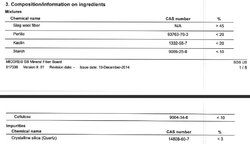Hello, all. I am new to the forum and to wood stoves. I have decided to install an NC30 in my living room but I need help with the hearth design. I need an R-value of at least 1.5 and would like dimensions around 48" x 60". The hearth will be free standing away from the wall, over an existing laminate wood floor. I do not want to make any permanent modifications to the house. This is my home but will eventually be rented out. I want the ability to relatively quickly remove the stove and put everything back to normal. I want to be safe and meet or exceed any code requirements. Obviously I would like to keep the budget within reason but I am flexible in this regard if need be.
I have gone back and forth between building the hearth and ordering a hearth in a box. I can't help but feel that I can save plenty of cash and end up with just as good of a product by building it myself. I have considered a 3/4" plywood base with 5 x 1/2" durock sheets with thinset and tile on top. I have also considered springing for micore and doing the 3/4" plywood followed by a durock-micore-durock sandwich. I also have a decent supply of brick.
Any tips, tricks, suggestions, or links to good examples would be greatly appreciated.
I have gone back and forth between building the hearth and ordering a hearth in a box. I can't help but feel that I can save plenty of cash and end up with just as good of a product by building it myself. I have considered a 3/4" plywood base with 5 x 1/2" durock sheets with thinset and tile on top. I have also considered springing for micore and doing the 3/4" plywood followed by a durock-micore-durock sandwich. I also have a decent supply of brick.
Any tips, tricks, suggestions, or links to good examples would be greatly appreciated.


